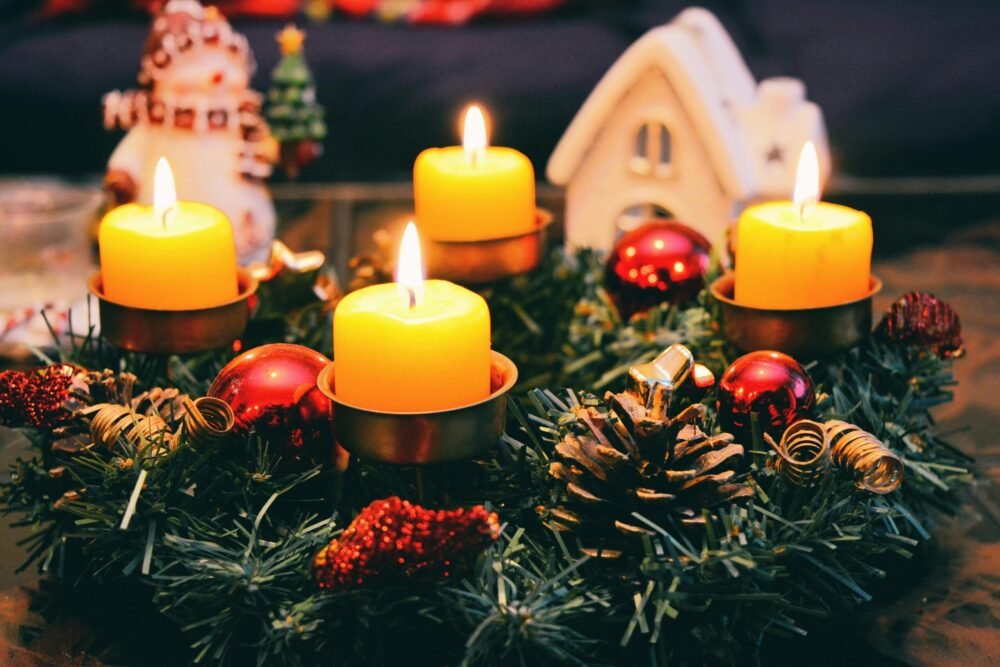Christmas in Germany is a time steeped in tradition, community, and a deep sense of cultural pride. From festive markets to Advent calendars, Germans embrace the season with a unique blend of old-world charm and modern festivities. Let’s take a journey through the traditions, customs, and highlights that make Christmas in Germany a truly magical experience.
The Advent Season: A Prelude to Christmas
For Germans, the Christmas season begins long before December 25th. The four weeks leading up to Christmas, known as Advent, are a period of anticipation and preparation. Families and communities engage in various traditions to mark the days leading up to Christmas.
One of the most cherished customs is the Advent calendar (Adventskalender). While the concept has spread worldwide, it originated in Germany in the 19th century. Today, Advent calendars range from simple cardboard creations with chocolate-filled windows to elaborate handmade versions featuring small gifts or messages. For many children, opening a door each day adds a sense of excitement and wonder to the season.
Equally important is the Advent wreath (Adventskranz), a circular arrangement of evergreen branches adorned with four candles. Each Sunday of Advent, a new candle is lit, often accompanied by prayers or songs. This tradition brings families together and serves as a reminder of the spiritual aspect of Christmas.
Christmas Markets: A Feast for the Senses
Germany is world-famous for its Christmas markets (Weihnachtsmärkte), which transform town squares into winter wonderlands. These markets, often dating back centuries, are a cornerstone of German Christmas culture. From late November until Christmas Eve, visitors can explore stalls offering handcrafted goods, seasonal treats, and festive decorations.
Some of the most iconic markets include:
Nuremberg Christkindlesmarkt: Known for its traditional wooden stalls and the angelic Christkind who opens the market.
Dresden Striezelmarkt: One of the oldest Christmas markets in the world, celebrated for its giant Christmas pyramid and stollen (a fruit-filled bread).
Cologne Christmas Market: Set against the backdrop of the stunning Cologne Cathedral, this market is famous for its artisan crafts and mulled wine (Glühwein).
Visitors to these markets are treated to the aromas of roasted nuts, gingerbread (Lebkuchen), and sausages, as well as the twinkling lights and festive music that create an enchanting atmosphere.
St. Nicholas Day: A Celebration of Giving
On December 6th, Germans celebrate St. Nicholas Day (Nikolaustag). This tradition honors St. Nicholas, the patron saint of children, sailors, and the poor. The night before, children leave out their shoes or boots, hoping that St. Nicholas will fill them with small gifts, candies, or fruit. Naughty children, according to folklore, might find only a switch or coal.
In some regions, St. Nicholas is accompanied by Knecht Ruprecht or Krampus, figures who serve as a reminder for children to behave. This day reinforces the values of kindness and generosity, setting the tone for the rest of the season.
Decorating the Christmas Tree
The tradition of decorating a Christmas tree (Weihnachtsbaum) also has its roots in Germany. Typically, families bring the tree into their homes a few days before Christmas, although some wait until Christmas Eve. The trees are adorned with ornaments, candles, or lights, and sometimes edible decorations like cookies or candies.
In many households, the tree is kept secret from the children until Christmas Eve. The unveiling of the decorated tree is a moment of awe and joy, often accompanied by the singing of carols like “O Tannenbaum.”
Christmas Eve: The Heart of the Celebration
While December 25th is significant, the main Christmas celebration in Germany takes place on Christmas Eve (Heiligabend). This evening is often reserved for close family gatherings and the exchange of gifts (Bescherung).
The evening typically begins with a festive meal. While dishes vary by region and family, popular options include roast goose, carp, or sausages with potato salad. For dessert, families might enjoy stollen, marzipan, or spiced cookies like Pfeffernüsse and Spekulatius.
After dinner, many families attend a Christmas Eve church service. Midnight Mass is particularly popular, offering a serene and reflective atmosphere to mark the birth of Christ. For others, the evening is spent singing carols and reading the Christmas story from the Bible.
The Days of Christmas: Continuing the Celebration
In Germany, the Christmas celebration doesn’t end on December 25th. The following day, December 26th, is a public holiday known as the Second Day of Christmas (Zweiter Weihnachtsfeiertag). This day is typically spent visiting extended family or enjoying a relaxed day at home.
The Twelve Days of Christmas, culminating in Epiphany on January 6th, are also observed in some regions. On this day, groups of children, known as Sternsinger (star singers), go door-to-door dressed as the Three Wise Men, singing carols and collecting donations for charity.
Regional Variations and Unique Customs
Germany’s diverse regions bring unique flavors to Christmas celebrations. For instance:
In Bavaria, Krampus parades are common, with costumed figures playfully frightening onlookers.
In Saxony, the tradition of the Christmas pyramid (a wooden carousel with figurines) is widespread.
In the Rhineland, making and gifting personalized gingerbread hearts is a popular custom.
Additionally, some families still observe older traditions like the Christkind, an angelic figure who brings gifts, instead of the modern Santa Claus.
A Spirit of Togetherness
What sets German Christmas celebrations apart is the emphasis on togetherness and reflection. Whether it’s gathering around the Advent wreath, strolling through a Christmas market, or sharing a festive meal, the season is about cherishing time with loved ones and fostering a sense of community.
For visitors, experiencing Christmas in Germany offers a glimpse into a rich tapestry of traditions that have been lovingly preserved and adapted over centuries. It’s a time when the past and present come together to create moments of wonder, joy, and heartfelt connection.
As the Germans say, “Frohe Weihnachten!” (Merry Christmas!)

